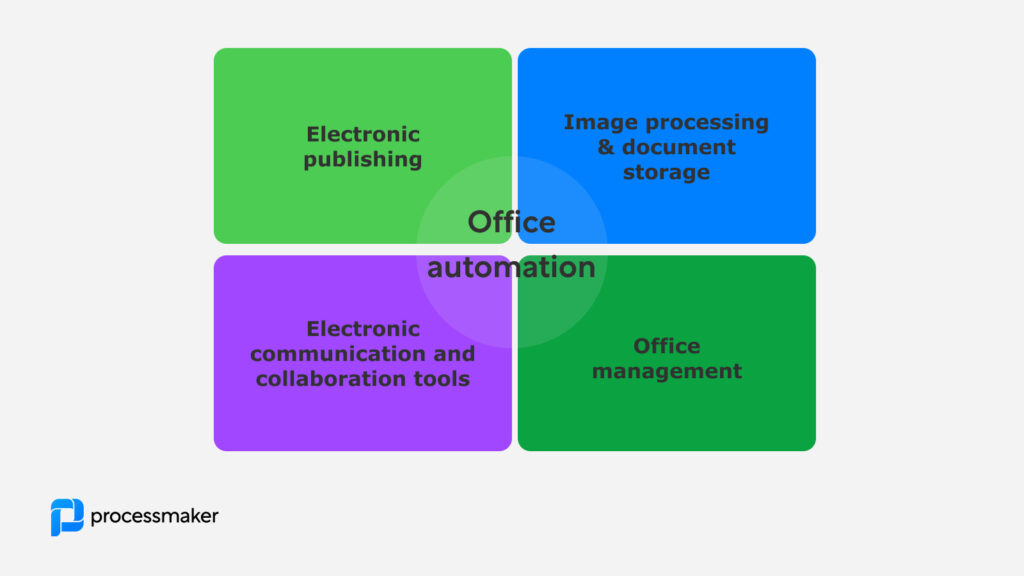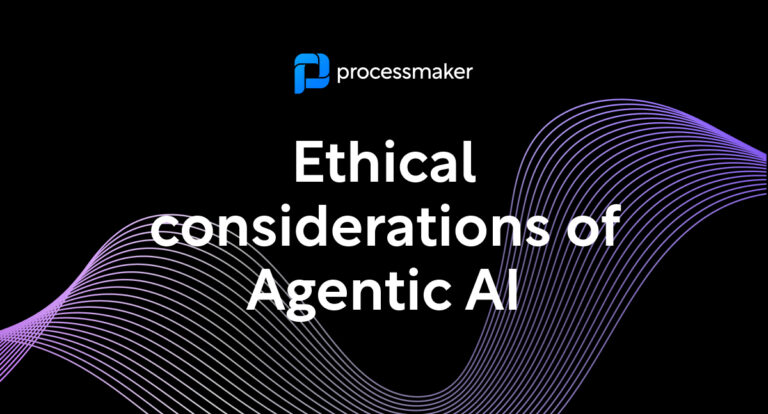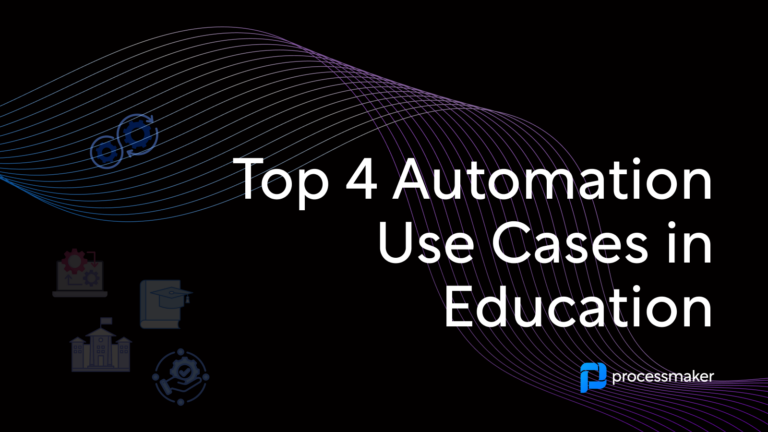Think about everything you do in your work week. While you work on the big-picture projects and initiatives, there are likely numerous smaller administrative tasks you complete that may take up a large percentage of your day. Imagine cutting those tasks down while still completing them efficiently. Now, you have more time to focus on your priorities, while someone, or rather something else handles the rest and eliminates bottlenecks. How does that sound?
McKinsey estimates that as much as 45% of activities that individuals are paid to perform can be automated. In the U.S. alone, these activities amount to some $2 trillion in annual wages. An office automation system plays an important role in helping organizations to eliminate time-consuming and repetitive manual tasks. Automating manual tasks reduces errors while saving employees time and preventing burnout. Office automation helps improve data access, speed up processes, and reduce the risk of manual errors, highlighting its evolution from basic tools to sophisticated technologies.
Most office automation technologies fall into the following categories:
- Electronic publishing
- Electronic communication and collaboration tools
- Image processing and document storage
- Office management
But let’s slow down for a second and break down what all of this means.
What is office automation?
Office automation refers to using software as a service (SaaS) to automate and streamline a surplus of administrative tasks and processes in an office or workplace setting. Ultimately, you leverage office automation so that you can improve efficiency, productivity, and even more importantly, accuracy in routine office tasks by utilizing advanced computer systems to collect, store, and manage data without human intervention.
This form of automation can orchestrate a wide range of activities, including word processing, data entry, document management, communication systems, scheduling and calendar management, task tracking, inventory management, accounting and finance functions, and customer relationship management (CRM).
Difference between office automation and business process automation (BPA) for repetitive tasks
Both workflow automation and business process automation (BPA) are closely related to office automation. The key differences between these solutions are mainly scalability. Office automation may be used in one department for administrative tasks, while workflow automation and BPA are used for larger, more complex business processes, spanning various departments, and involving multiple steps and stakeholders. Additionally, BPA often involves the use of workflow automation tools, robotic process automation (RPA), intelligent document processing (IDP), and other advanced technologies to automate and orchestrate processes across different systems and departments.
If you’re working in an office with less of a need for complex processes, office automation is a terrific solution that reduces the need for human intervention. But if you’re working for an enterprise company and looking to leverage workflow on a larger scale, BPA is a prime option to transform your business.
Types of office automation

1. Electronic publishing
Electronic publishing is one of the most widely used forms of office automation, which has evolved significantly since the introduction of the desktop computer. This category includes office tools that have become staples in our personal and professional lives, such as word processing and desktop publishing software. Microsoft Word, part of the Office 365 product suite, is the most widely used solution with an estimated 60 million monthly active Office 365 commercial customers.
Other office automation solutions such as content management systems (CMS) have become popular and allow employees to easily contribute to, schedule, or edit digital content. CMS solutions are cloud-based. This means that they can be accessed from anywhere by any number of users. Moreover, low-code technology such as drag-and-drop functionality allows non-technical users to easily create and manage their own web content. One of the most well-known examples of a CMS is WordPress.
2. Electronic communication and collaboration tools
A seamless and constant flow of clear and transparent communication throughout an organization improves both front-office and back-office productivity. Communication became more challenging than ever as organizations were forced to shift to remote work models early last year. By automating communication processes, teams can handle repetitive communication easily, thereby freeing up time for more essential tasks and fostering clearer, more transparent communication across the organization. According to a Gallop poll, some 70% of U.S. workers reported that they were “always” or “sometimes” working remotely in April of 2020. 56% of workers reported the same nearly a year after the start of the pandemic.
Now in 2023, remote work has become the norm, which is, of course, a reason to consider new resources and ways of managing your office, especially when it comes to communication. This is why so many organizations increasingly turn to office automation solutions that streamline communication. Some common examples include video conferencing solutions such as Zoom or Microsoft Teams or collaboration platforms like Slack. But in addition to these office automation tools, low-code development tools such as business process management (BPM) software will help organizations to improve their workflows.
For instance, an organization can eliminate bottlenecks by automating approval processes. Rather than chasing down supervisors for a signature through email or phone, employees can simply submit a request from home or at the office. The designated party receives an electronic notification, and the requester can easily track the status without the need to constantly follow up. Essentially, the days of waiting days on end for approvals are null.
3. Image processing and document storage
Image processing and document storage solutions include technologies such as document workflow management systems and imaging tools such as scanners and video capture cards. These systems seamlessly integrate with existing tools in the workplace, enhancing productivity and efficiency without disrupting current operations. Organizations that continue to rely on paper-based or unstandardized processes experience excessive costs, lost productivity, costly errors, and compliance issues.
A document workflow management system makes it easy to store, search for, and retrieve documents. But more than that, it boosts compliance by maintaining an audit trail and eliminates manual data entry tasks through features such as optical character recognition (OCR) and intelligent character recognition (ICR).
4. Office management and workflow automation
This category includes office automation technologies such as scheduling and task management solutions. With office automation software, organizations can enhance business efficiency by easily assigning and monitoring tasks, as well as collecting and analyzing performance data. BPM solutions take office automation a step further by allowing organizations to implement process-level improvements.
The choice is yours
There are several platforms you can use for office automation. ProcessMaker offers an industry-leading Business Process Automation (BPA) solution that helps organizations to implement and manage back-office automation. Features such as drag-and-drop form builders make it easy for business users to create forms that electronically capture data, as well as create approval processes. User-friendly dashboards also give stakeholders easy access to performance data allowing them to continually monitor and improve their processes. Chat with one of our experts to learn more.





